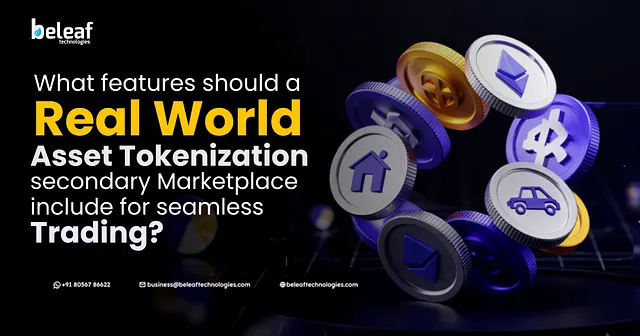VFX vs Snorter vs BlockDAG vs Remittix: Only One Has Live Trading Platform
Meanwhile, VFX Token quietly operates a licensed trading platform managing $40 million, processing 1,500 daily trades, and generating $225,000 monthly in real revenue. While competitors sell dreams, VFX Token sells ownership in a profitable business.
Snorter Bot: $3.5M Raised for a Telegram Bot That Doesn’t Exist
Snorter Bot raised $3.5 million at $0.10 per token promising a Telegram trading bot for Solana meme coins. The pitch sounds innovative – automated sniping, scam detection, 1,700% APY staking. But here’s the reality: the bot doesn’t exist. There are no users. No revenue. No working product. Just promises and a Telegram group hoping development delivers someday.
Compare that to VFX Token’s MetaTrader 5 integration processing 1,500 lots daily. Real traders execute real trades generating real rebates. The platform has operated for years with regulatory licenses, institutional-grade infrastructure, and 9,000 active users. While Snorter promises future functionality, VFX Token delivers proven results today.
BlockDAG: $400M for Theoretical Technology
BlockDAG’s $400 million raise impresses until you examine what investors actually bought – theoretical technology that might work someday. The Directed Acyclic Graph structure promises to solve blockchain’s scalability issues, but the mainnet doesn’t exist. The 3 million “users” are email addresses, not active participants generating revenue.
VFX Token raised just $745,000 because it doesn’t need hype to survive. The $40 million under management and $225,000 monthly rebates fund operations and rewards. The licensed broker status provides regulatory clarity BlockDAG lacks. When you can verify every claim through audited financials and regulatory filings, you don’t need $400 million in speculative funding.
Remittix: $21M for Payment Rails Without Payments
Remittix raised $21 million promising to revolutionize cross-border payments with instant fiat conversion. The roadmap looks impressive – PayFi infrastructure, bank integrations, global coverage. One problem: none of it exists. The wallet beta launches in Q3 2025. Bank partnerships remain “in negotiation.” Actual payment processing is months or years away.
VFX Token’s Visa and Mastercard integration works right now. Traders withdraw profits instantly to their cards. The payment infrastructure Remittix promises to build someday has been operational on Vortex FX for years. Why invest in future payment solutions when VFX Token offers working payments plus 67.7% APY staking rewards today?
The Live Platform Advantage
Here’s what separates VFX Token from every competitor:
Live Trading: 1,500+ lots processed daily through MetaTrader 5
Real Users: 9,000 active traders, not email subscribers
Proven Revenue: $225,000 monthly rebates, not projections
Working Products: Live Visa/Mastercard, not coming soon
Regulatory Compliance: Licensed broker, not legal gray area
Immediate Utility: Trade and withdraw today, not someday
While Snorter, BlockDAG, and Remittix ask investors to fund development hoping for future success, VFX Token offers ownership in an operational business generating profits now.
Why VFX Raised Less But Offers More
The presale market rewards hype over substance. BlockDAG’s $400 million raise bought promises. Remittix’s $21 million funds hope. Snorter’s $3.5 million bets on memes. VFX Token’s $745,000 buys into proven infrastructure worth far more.
Consider the math: VFX Token manages $40 million in client assets, 53x its current raise. Monthly rebates of $225,000 equal $2.7 million annually. The enterprise value of established trading firms typically ranges 5-10x annual revenue, suggesting VFX Token should be valued at $13.5-27 million based on current operations alone. The presale at $745,000 represents a 95% discount to reasonable valuations.
The Smart Money Choice
Investment decisions come down to risk versus reward. Snorter Bot at $0.10 requires believing a Telegram bot can compete with established platforms. BlockDAG at nearly half a billion valuation assumes theoretical tech works perfectly. Remittix at $21 million hopes banks embrace crypto payments.
VFX Token at $0.06 requires believing nothing – the business already works. The 9,000 traders already trade. The $225,000 monthly rebates already flow. The 67.7% APY already pays. You’re not funding development; you’re buying into proven success at startup valuations.
When comparing presales, one question matters: would you rather own promises or profits? Snorter, BlockDAG, and Remittix sell the former. VFX Token delivers the latter. With Round 1 at just $0.06 and exchange listing targeted at $1.00+, the choice becomes obvious for investors who value substance over speculation.
Choose the only presale with a live platform.
Join: https://vfxdapp.io
X: https://x.com/vfxdapp
Telegram: https://t.me/vfxdapp
This publication is sponsored. Coindoo does not endorse or assume responsibility for the content, accuracy, quality, advertising, products, or any other materials on this page. Readers are encouraged to conduct their own research before engaging in any cryptocurrency-related actions. Coindoo will not be liable, directly or indirectly, for any damages or losses resulting from the use of or reliance on any content, goods, or services mentioned. Always do your own research.
The post VFX vs Snorter vs BlockDAG vs Remittix: Only One Has Live Trading Platform appeared first on Coindoo.
También te puede interesar

South Korea’s $657 Million Exit from Tesla Signals a Big Crypto Pivot

CME to launch Solana and XRP futures options on October 13, 2025

